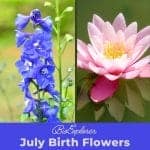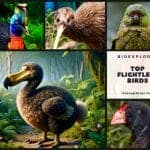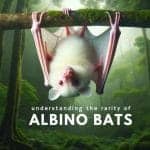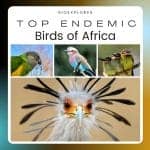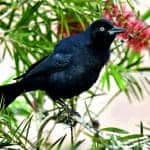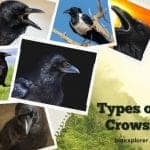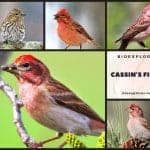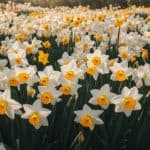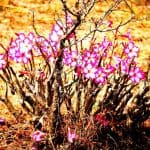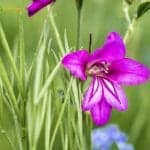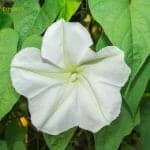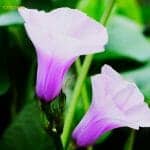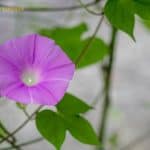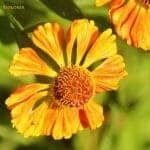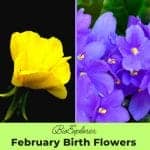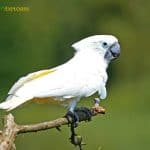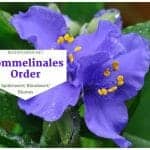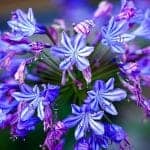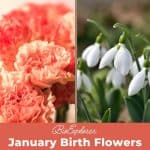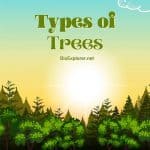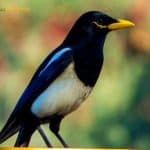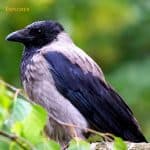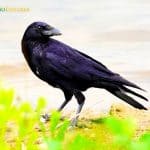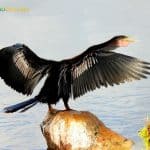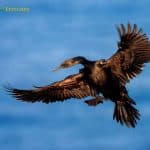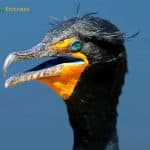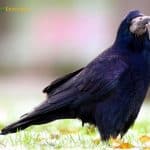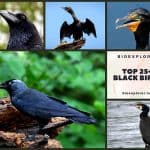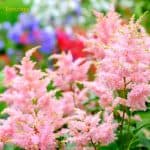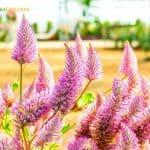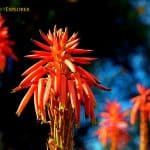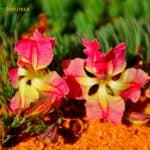Sun - search results
If you're not happy with the results, please do another search
Order Malvales / Hibiscus & Mallow Flowers
Malvales is a medium-sized order, commonly called the Hibiscus or mallow order, mainly consisting of woody plants that feature showy five-petaled flowers with an epicalyx. The order comprises 10 families, 338 genera, and around 6,000 species. Gossypium, Edgeworthia, Daphne, Gnidia, and Chinese Hibiscus are flowers in Malvales.
April Birth Flowers
Discover the hidden symbolism behind April's birth flowers - daisies and sweet peas. Explore their significance (symbolism & meaning) in this captivating read.
May Birth Flowers
Unveil the significance of May birth flowers! Discover the hidden meanings and symbolism behind Lily of the Valley and Hawthorn in this insightful blog post.
July Birth Flowers
Dive into the captivating meanings behind July birth flowers: Larkspur and Water Lily. Learn how to honor July-borns with these vibrant blossoms.
85 Different Types of White Flowers For Your Garden!
Discover the captivating world of the top 85+ white flowers, from the iconic Lily of the Valley to the lesser-known Snowball Viburnum. Explore their enchanting beauty, rich symbolism, and fascinating scientific facts in this comprehensive guide.
Marine Iguana
A comprehensive guide to the Galápagos marine iguana (Amblyrhynchus cristatus) - the world's only seagoing lizard. Learn all about their taxonomy, adaptations for life in coastal habitats, feeding behaviors, social dynamics, threats to survival, and conservation status of this iconic species endemic to the Galápagos Islands of Ecuador.
Top 34 Flightless Birds of All Times!
Flightless Birds: Insight into how birds adapted over time to live grounded lives. This article explores major flightless species - from giant moas to tiny kiwis and curious penguins - examining how isolation and lack of predators drove anatomical changes forfeiting skies for land locomotion mastery.
Albino Bats
Albino Bats - Discover the genetic causes, physical traits, geographic hot-spots, and conservation efforts surrounding these rare pigment-less morphs that persist in tropical caves and forests through 60 global cases across 11 families.
Birds of Africa
Birds of Africa: Home to over 2,000 bird species, the African continent boasts some of the most spectacular avian diversity on Earth. From tiny sunbirds to massive ostrich, dazzling birds occupy every habitat across Africa's vast landscapes. Explore the top African birds here.
Greater Antillean Grackle
The Greater Antillean Grackle is a glossy black songbird native to the Caribbean’s Greater Antilles, including Cuba, Jamaica, Hispaniola, and Puerto Rico. Males reach about 27 cm (11 in) with a distinctive keel-shaped, "rudder-like" tail, while females are slightly smaller and less glossy. Its most striking feature is its bright yellow eye, the only non-black part of its body. These bold, noisy black birds thrive in open habitats near humans-towns, farms, mangroves, and pastures-and often form large, social flocks. Opportunistic eaters, they consume insects, fruit, seeds, small animals, and even human scraps.
Mongoose Lemur
Learn about the endangered mongoose lemur (Eulemur mongoz), a small Madagascar primate with red beards and bushy tails. Get fascinating facts on their rainforest habits, unique behaviors, seed dispersal ecology, and major threats driving their worrying decline.
Yellow Monkeys
Yellow Monkeys: Monkeys exhibit a dazzling array of fur colors and patterns, but a select group stands out for their unique yellowish hues blending into tropical forest backdrops. Yellow monkeys include both New World primates like spider monkeys and capuchins and Old World species such as macaques, langurs and gibbons.
Types of Crows
The Corvidae family, renowned for its intelligence and adaptability, includes crows, ravens, rooks, jackdaws, magpies, and jays. Within this family, the genus Corvus encompasses the "true crows" - a group of 43 recognized crow species found on every continent except South America and Antarctica. These birds are characterized by their robust build, all-black or mostly black plumage, strong bills, and remarkable problem-solving abilities. Crows occupy diverse habitats, from forests and grasslands to cities and islands. Many species are highly social, form complex social structures, and display advanced tool use and vocal mimicry. Their ecological roles range from scavengers to seed dispersers, making them vital to many ecosystems.
Albino Ferrets
Explore the intriguing world of Albino Ferrets - their unique genetics, characteristics, care needs, and challenges in the wild. Uncover the joy of owning one!
Albino Monkeys
Albino monkeys, also known as monkeys with albinism, lack pigmentation in their skin, hair, and eyes. Discover more about these unique creatures and their genetic condition.
Albino Deer: A Rare and Fascinating Genetic Mutation
Albino deer are extremely rare and fascinating genetic anomalies. This in-depth guide covers what albino deer are, why they're white, where they're found, major challenges they face, controversies surrounding them, seeing them in zoos, and reasons we find these mystical-looking white deer so captivating.
Cassin’s Finch
Learn about the Cassin's Finch, a unique songbird of western North American mountain forests. This adaptable finch has complex songs, nomadic habits, and thrives across diverse coniferous habitats. Gain insights into this little-known species' ecology and importance.
The 25 Most Captivating Narcissus Flowers You Need to Know!
Explore the mesmerizing world of Narcissus Flowers with our detailed guide. Dive into the top 25 daffodil varieties, from the classic Trumpet to the exotic Pheasant's Eye.
Everlasting Daisy
Rhodanthe chlorocephala is a species of daisy native to Australia and belongs to the Asteraceae family. The Everlasting Daisies can be dried and will last for a long time. This is done by hanging the flowers upside down after the cutting. This is best done when the flowers first open.
Desert Rose
The Desert rose plant is an evergreen, deciduous shrub of the Gentianales order. Desert roses can grow from 3.3 to 9.8 ft. It is a trendy ornamental plant with plumeria-like flowers.
Pua Kala
Anyone with a sunny and dry spot on their property could consider planting the native Hawaiian plant known as Pua Kala (Argemone glauca). The genus has about 30 members and belongs to the plant family Papaveraceae (poppy family).
Miniature Gladiolus
Miniature Gladiolus (Gladiolus nanus) is sometimes referred to as dwarf Gladiolus. It is actually a smaller growing variety than the more popular varieties. Miniature Gladiolus produces fantastic two-tone spikes of pink flowers with a hint of white on its throat.
Moonflower
Nature is practical and alive throughout the day. Moonflowers (Ipomoea alba) are nocturnal flowers and are best enjoyed by night owls and nightwalkers. The leaves are whole or 3-lobed, 5 to 15 cm long, with a stem 5 to 20 cm long. The fragrant flowers are pink or white and large, 8 to 14 cm in diameter.
Ipomoea
Ipomoea belongs to a family of flowering plants known as Morning Glory, which are unruly vines, deeply rooted in Mexico's flora. They have blue, purple, lavender, or pink flowers that fade at night and open every morning.
Japanese Morning Glory
Japanese morning glory is a climber plant with 5 meters. It has been a widely cultivated ornamental garden plant. In addition, growing Ipomoea nil is part of the curriculum of Japanese elementary students.
Helenium
Give your landscape a glorious late-season color with Helenium, a light-demanding perennial that offers long-lasting blooms from mid to late summer to fall every year. It features daisy-like flower clusters (2-inches in diameter) with distinctive pale yellow wedge-shaped rays and dome-shaped, dull yellow central discs.
Marigold
Marigold (Tagetes erecta), known in Mexico as Cempasúchil, holds immense cultural significance. Its vibrant orange and yellow blooms are central to Día de los Muertos (Day of the Dead) celebrations, where the flowers are used to decorate altars and graves.
February Birth Flowers
Discover the beauty and symbolism of February's birth flowers: violets and primroses. Dive into their rich history, meanings, and unique facts.
November Birth Flowers
Delve into the world of November birth flowers – chrysanthemums and peonies. From symbolism to stunning arrangements, find inspiration today!
October Birth Flowers
Discover the meaning behind October birth flowers, Marigold and Cosmos. Explore their symbolism and find the perfect gift for autumn birthdays!
August Birth Flowers
Delve into the rich history and symbolism of August birth flowers - Gladiolus and Poppy. Find out why they're perfect for birthdays this month!
March Birth Flowers
Discover the magical meanings behind daffodils and jonquils, March's birth flowers. Find out how to choose the perfect floral gift for your loved one!
White Cockatoo
Discover the breathtaking beauty of the White Cockatoo (Cacatua Alba), their characteristics, diet and several interesting fun facts about them here.
What Do Marine Biologists Do?
Discover how marine biologists unlock the mysteries of aquatic life and protect our oceans' delicate ecosystems. Immerse yourself in this captivating field today!
Order Commelinales / Spiderwort & Bloodwort Flowers
The plant order Commelinales is a highly diverse group of APG IV classification systems. The most common and useful plants which represent the value of Commelinales are its ornamental plants which are primarily grown in houses and outdoors. Spiderworts, Bloodworts, Blumes, Frogmouth, Wolly waterlilies, and Pickerel-weed Plants are some of the examples in Commelinales order.
Hibiscus Varieties
Dive into the vibrant world of hibiscus! Explore 25+ stunning varieties, from rare native species to popular garden favorites. Learn about their unique characteristics, care tips, and fascinating facts. Perfect for gardeners and flower enthusiasts alike. Discover the beauty and diversity of these tropical treasures!
Agapanthus
Commonly known as the African lily (or the lily of the Nile in Britain) and the flower of love, the Agapanthus is native to southern Africa. It grows mainly in shady areas where it's protected from the heat of the African sun.
Forget-Me-Not
Forget-Me-Not (Myosotis sylvatica - State Flower of Alaska) is a perennial plant native to the provinces and northwestern states of Canada and the United States. The radially symmetrical blooms are light blue with vibrant yellow centers. They are usually arranged in rounded and divergent racemes along the branch.
December Birth Flowers
Are you wondering about the special flower for those born in December? Look no further. This article reveals that December has two birth flowers: Holly and Narcissus (Paperwhite), each with unique symbolism.
January Birth Flowers
Explore January birth flowers, Carnations & Snowdrops. Learn their symbolism, connection with horoscopes, care tips, and cultural significance.
Top 15 Evolutionary Biology News of 2022
This series of evolutionary biology news of 2022 gives us a detailed overview of the recent development in this field. Commencing with the evolution of plant colonization on land, the new approach of Neo Darwinism gained importance and more.
Top 15 Biotechnology News of 2022
The 2022 biotechnological innovations paved the way for stem cell therapies, cannabinoid trichomes' roles in plant defense mechanisms, inventory methods to utilize human waste, the role of quick mRNA vaccines and more.
Types of Trees
Discover the diverse types of trees, from deciduous to evergreen. Enjoy vivid pictures, and learn their roles in ecosystems and their conservation efforts.
Yellow-billed Magpie
The Yellow-billed Magpie is a striking, large black-and-white bird with shimmering blue-green wings and tail, and a distinctive bright yellow bill and eye ring. Endemic to California’s Central Valley and nearby foothills, it thrives in open oak woodlands, farmlands, and orchards. Highly social, these magpies nest in loose colonies and build dome-shaped nests high in trees. Their varied diet includes insects, acorns, grains, fruit, carrion, and even garbage. Known for their intelligence, they can mimic sounds and sometimes hold "funerals" for dead flockmates. The species is vulnerable due to habitat loss and West Nile virus.
Hooded Crow
The Hooded Crow is a medium-sized, two-toned corvid with a pale grey body and contrasting black head, wings, tail, and thigh feathers. Found across northern and eastern Europe and parts of the Middle East, it adapts well to woodlands, farmland, coasts, and cities. Hooded Crows are highly intelligent, known for using tools and dropping shells or nuts from heights to crack them open. Their omnivorous diet includes insects, small animals, grains, carrion, and human scraps. Hooded Crows often pair for life, and their harsh "kraa" call is a familiar sound in their range.
Carrion Crow
The Carrion Crow is a medium-sized, glossy black bird native to Europe and Asia, recognized for its deep, guttural “kraa” call and solitary habits. Adaptable to a wide range of habitats-including woodlands, farmland, moors, coastal cliffs, and urban areas-it often perches in high places to survey its surroundings. Highly intelligent, Carrion Crows use tools, recognize human faces, and even cooperate with each other to hunt or defend territory. Their diet is varied, consisting of carrion, insects, seeds, fruit, and small animals. Offspring from previous years sometimes help parents feed new chicks.
Anhinga
The Anhinga, also called the “snake bird” for its long, slender neck, is a large, mostly black water bird with a pointed yellow bill and silvery wing patches. Males have darker, glossy plumage, while females show a paler head and neck. Found in freshwater swamps, lakes, marshes, and slow-moving rivers from the southeastern U.S. to South America, Anhingas are expert divers, swimming underwater with only their head and neck exposed. Unlike most birds, they lack waterproofing oils, so they must spread their wings to dry after diving. Anhingas spear fish with their sharp bills and swallow them headfirst.
Pelagic Cormorant
The Pelagic Cormorant is the smallest and most slender cormorant along the Pacific Coast, recognized by its long, thin neck and all-black plumage, with breeding adults showing white flank patches and short crests on the crown. Found from Alaska to Baja California and the Asian Pacific coast, it inhabits rocky shorelines, bays, and coastal cliffs, rarely venturing far from land. This species dives to depths over 130 feet to catch small fish and invertebrates, often foraging alone. Nests are built on narrow cliff ledges and reused for years.
Double-Crested Cormorant
The Double-Crested Cormorant is a large, black waterbird with a long neck and orange-yellow facial skin. During breeding season, adults display two curly black or white crests on their heads. Found across North America in both freshwater and coastal habitats, they are highly adaptable, nesting in trees, on the ground, or even on artificial structures. These social birds often gather in colonies and are expert divers, feeding mainly on fish but also taking insects, crustaceans, and amphibians. After diving, cormorants are often seen perched with wings outstretched to dry, as their feathers are not fully waterproof.
Rook
The Rook is a large, sociable black bird native to Europe and Asia, easily recognized by its bare, pale-grey face and cone-shaped head. It forms noisy colonies called rookeries, nesting high in tall trees near farmland, villages, or parks. Rooks forage in flocks, probing fields for grubs, worms, seeds, and grain, but also eat insects, small mammals, and carrion. Highly intelligent, they use tools and have excellent memories. Unlike crows, adult rooks show a whitish patch at the bill’s base. Some rookeries have been used for over a century.
Black Birds
Discover the top 30+ black birds' mesmerizing beauty, unique behaviors, and fascinating facts. Dive into a symphony of wings and feathers as we explore these captivating dark birds shedding light on their mysterious allure.
Astilbes
Discover the vibrant world of Astilbes, perennial flowering plants that thrive in the shade. Learn about their unique characteristics, astilbe varieties, care tips, and how they can add a touch of elegance and color to your garden.
16 Immortal Animals Who Defy Death
While all cells grow, age, and die eventually, here is a list of the 16 amazing immortal animals for whom this rule does not seem to apply.
Drummond’s Phlox
Phlox drummondii is a showy annual flowering plant under the order Ericales. The Drummond’s Phlox can grow to 6-12 inches. Drummonds Phlox is considered one of Texas’ most beautiful wildflowers. In addition, it has been valued as an “exotic” cultivated garden flower in Europe for nearly 150 years.
Mulla Mulla
Ptilotus exaltatus is an annual herb endemic to Australia. This plant is a member of the order Caryophyllales. Ptilotus has about 100 species. All of the species, except 1, are endemic to Australia. For example, the beautiful colored flowered P. exaltatus is native to Australia.
Krantz Aloe
Aloe arboresens is a perennial succulent of the order Asparagales. It can grow to a height of 2-3 meters. The bitter juice of the Aloe arborescens has medicinal uses. For example, the burn victims of WWII were treated with the concoctions of Aloe.
Wreath Lechenaultia
Lechenaultia macrantha is a small herbaceous plant from the Goodeniaceae family. It usually grows 150 mm or less. The Wreath Lechenaulta flowers, when viewed from above, show an attractive wreath-like form.
Top 15 Ecology News of 2021
This series of 2021 ecology news gives us a detailed overview of the recent development in this field. Commencing with climate change, global warming, alternative ways for renewable energy resources, the role played by scavengers in our society, and other global aspects of management and nature-dependent climate solutions.
Top 15 Microbiology News of 2021
These topics focus on the discoveries and developments in Microbiology in 2021. Research and developments on various topics, such as engineered bacteria, oil-degrading bacteria, and symbiotic relationship between root colonizing bacteria and host plants, have been included here.
Maués Marmoset
The Maués marmoset (Mico mauesi) is a marmoset native to Brazil. It is only found on the western bank of the Maués Açu River in the state of Amazonas. Maués marmosets are arboreal and diurnal, spending most of their lives in trees.





